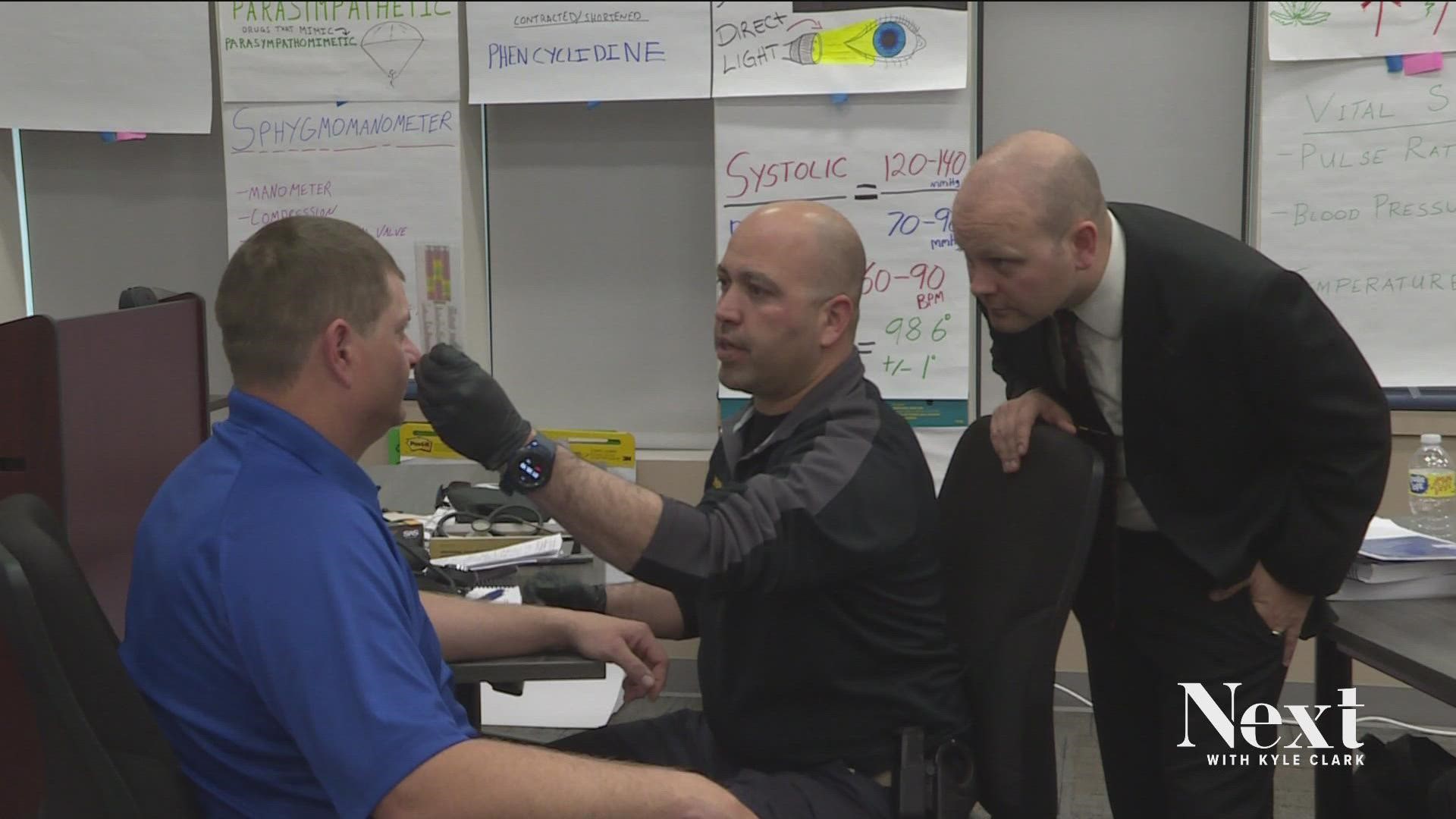DENVER — Law enforcement in Colorado say fentanyl is showing up in the blood streams of people who are pulled over for impaired driving.
They're training this week on how to watch for drivers who are impaired for reasons other than alcohol.
Reasons for the training
At the beginning of the month, the Colorado Dept. of Transportation (CDOT) reported a 44% increase in fatal crashes linked to impaired drivers since 2019. For that reason, CDOT decided to launch a Drug Recognition Expert (DRE) training program for law enforcement.
"The DRE School is a nine-day intensive training that provides law enforcement officers the knowledge, skills, and abilities to detect vehicle operators who are impaired by a variety of drugs," CDOT said in a press release. "Officers learn how to document the impairment and present a case in a courtroom setting on drug impaired driving."
The Colorado Division of Criminal Justice also published a report at the beginning of 2022 after analyzing 26,000 impaired driving cases filed in Colorado in 2019. They found:
- 45% of drivers tested positive for multiple substances. The most common combination of drugs detected was alcohol and Delta 9-THC, which is the primary psychoactive component of cannabis and may indicate recent use. The second most common pairing was alcohol combined with other drugs such as cocaine, methamphetamine, sedatives and opioids.
- 68% of individuals with detected Delta-9 THC also had some other substance present. Alcohol was the most common co-occurring substance.
"There are more impaired drivers on the road than we really have the availability to enforce," said Kurt Barnes, a technician with Denver Police who is also teaching the course.
Barnes said he's been seeing more drug usage and more poly-drug usage with people getting behind the wheel.
This training this week includes law enforcement from seven communities across the state and Colorado State Patrol (CSP).
"The law says we need to look the minimal impairment," said CSP Corporal Ivan Alvarado, who is in training this week. "People don't realize you don't have to be puking, falling over to not be able to drive."
Alvarado has been with CSP for 15 years and said he has had too many conversations with families who've lose loved ones.
"Yes, in 25 years, I can tell you I've talked to way too many people who've lost a family member. It's hard enough when there's no rhyme or reason. Hard to explain to someone, someone's irresponsible decision is why they don't have a family member anymore."
According to Alvarado, the issue also applies to people taking a prescription medication who did not heed warnings about not driving under its influence.
Has law enforcement pulled people over with fentanyl in their system?
Yes.
Both Barnes and Kyle Clark, with the International Association of Chiefs of Police that oversees this training, said so.
"Sometimes see them on the side of the road -- passed out with kids in the back of the street," Clark said.
This training is used across the country so that the standards are the same from state to state.
What does the training do?
Officers are taught to take blood pressure and check pulse and body temperature to deduce what's happening with a person.
"Could be heroin slowing the body down," said Barnes.
The training could help officers recognize an overdose and use naloxone to reverse it. It also helps them figure out the difference between a medical emergency and impairment.
Being able to tell the difference between alcohol and drugs plays a role in whether that person goes to court.
Colorado was the third state in the country to sign up for this training in the 1980s, after California and Arizona. But the trainers said it takes on even more importance with the number of people using drugs, overdosing and dying.
The officers will join the 1% of law enforcement with this kind of training spread out across the state.
Trainers said they also work with doctors and ophthalmologists to check their standards and methods.

